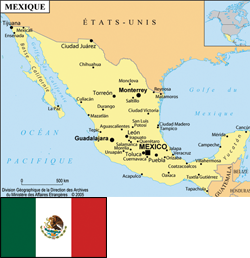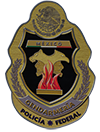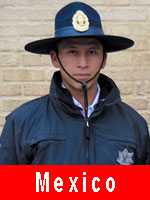
Mexican National Gendarmerie
|
2014 Ministry of attachment: Ministère de l’Intérieur Workforce: 5 500 General manager: Commissaire Général Address: Torre Pedregal : Adolfo Ruiz Cortines n° 3648 piso 10 Tél.: (55) 54814300 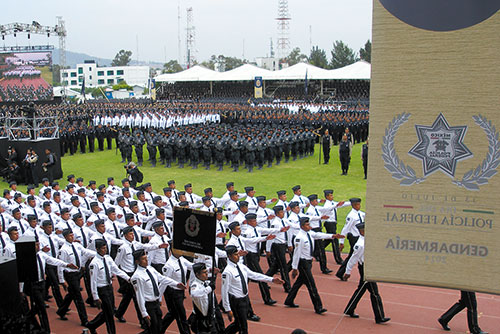
|
History
In the XIXth century, during the French military intervention (1861-1867), a Mexican imperial Gendarmerie (Gendarmería Imperial) is officially created on June 9th, 1865 on the French model by emperor Maximilien 1st. This institution disappears shortly after the departure of the French people in March 1867 and the fall of Maximilien 1st‘s imperial regime.
In April 2012, during his campaign for the Mexico presidency, Enrique Peña Nieto takes back the idea to set up a Gendarmerie being inspired by the French and Colombian model. The Mexican Gendarmerie is officially created by the presidential decree of August 22nd, 2014 and establishes the Federal Police 7th division. Composed at present of 14 groupings, it is "mobile" and likely to intervene on all the United States of Mexico territory. With an initial size of 5 000 staffs, its growth has to continue in the coming years.
On August 27th, 2014, Police General Commissioner Manelich Castilla Craviotto is appointed at the head of the Gendarmerie.
On March 19th, 2015 in the city of Ocotlan, in the Jalisco State, this strength knows its first dead people in operation. Several Gendarmerie patrols are attacked, resulting in the death of five gendarmes. This attack, led by the cartel of Jalisco members, is the most murderous since the creation of the Gendarmerie.
Organization
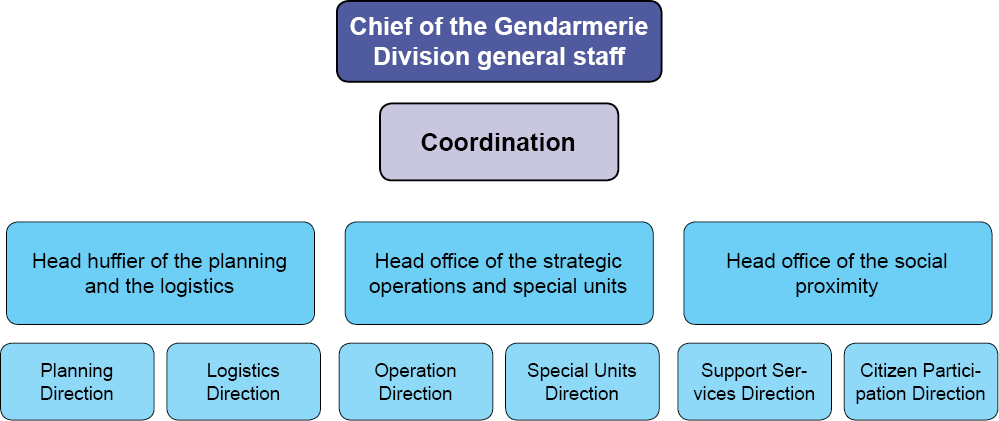
Central Organization
The Gendarmerie headquarters is based in Mexico (Command: Torre Pedregal; Contel Barracks services).
The Gendarmerie Division general staff under the orders of a "Coordinador general" is organized in 3 directions:
• head office of the planning and the logistics;
• head office of the strategic operations and special units;
• head office of the social proximity.
Territorial organization
No territorial organization. Groupings of 301 mobile elements on the entire national territory.
Specialized Training
• Installation of 2 groupings on border areas (one in the South & one in the North of the country).
• The future Installation of the grouping of cavalry and the grouping of special forces on Mexico. They are at present quartered to Iguala (State of Guerrero).
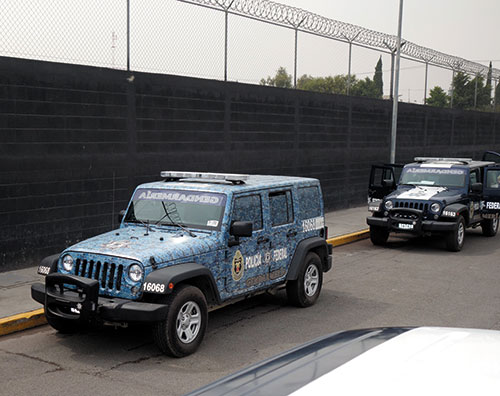
Missions
The article 17 a of the federal police law defines missions assigned to the Mexican Gendarmerie. This strength concentrates its action on the fight against criminality. It also ensures the law and order by favouring the freedom of mobility of the people and freedom of mobility of goods. It is also in charge of the protection of the strategic economic activities of the country. It intervenes in the rural, urban, tourist and border areas.
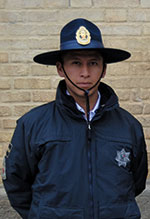 Staff
Staff
• Actual 5 500 in 2015.
• Staff with civil status belonging to the federal Police.
• No granted accommodation (mobile barracks or hotel in travel).
• Rate of feminization: 13 %.
Training institutions
Academies: San Luis Potosí; Ciudad Juárez; Hermosillo; Culiacan; Veracruz; Mexico Federal district.
Main equipment
• Armament: assault rifle CESKA (CZ 805 BREN A1).
• Light Vehicles: jeep - Dodge.
• Armoured vehicles of transport and fight: jeep and armoured Dodge.
• Aerials means: helicopters Dauphins (Eurocopter) and American Blackhawk belonging to the Federal Police.
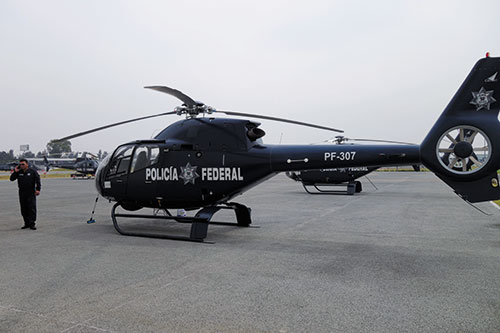
Cooperation
Initiated in 2014 with the contact officers’ first promotion training led by 10 French officers and non-commissioned officers, this cooperation diversified and became intensified in 2015 by favouring trainers’ training:
• the Republican guard, after an audit at the beginning of the year, brings now its help to the constitution of an equestrian Grouping (Riders’ training in St Germain en Laye and in Mexico);
• immersion stays in squad of departmental Gendarmes began for Mexican squad of gendarmes commanders in order to make them discover the local police concept;
• an audit led by the Toulouse Gendarmerie Interregional Group of Intervention executives (PI2G in French or GIGI) opens interesting perspectives regarding intervention, domain where the Mexicans show themselves interested by the French knowledge;
• young Mexican gendarmes will participate at the end of the year in several training courses in France (Professional intervention Instructor in the Gendarmerie Forces National Training Centre (CNEFG) in Saint-Astier, proximity criminal identification technician);
• training initiatives in French language for the staffs called to move in France, organized by the federal police, come to strengthen this project;
• the establishment of a project manager, the French gendarmerie senior officer, on October 15th, 2014 has proved to be essential and constitute a recipe success for the management of this project.
Finally, a Mexican Gendarmerie detachment paraded on July 14th, 2015 on the Paris Champs-Elysées, on the National holiday day.
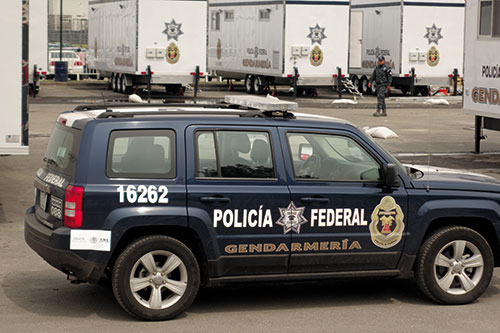
© The iconography was provided by the concerned gendarmeries

